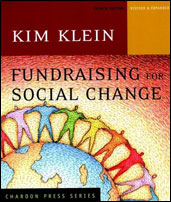 The Dark Side Of Marketing
The Dark Side Of Marketing
For the longest time, I associated people who market and advertise with evil. I hated seeing advertisements telling me “if only I bought this, I would be cool also”. I couldn’t imagine what type of person became a marketer or advertiser. Now I am one.
Marketing that attempts to change our belief systems or undermine our values I consider evil . It lives by appealing to our insecurities, showing us a shortcut to happiness. It preaches fear, isolation, failure and shows salvation by living your life differently. A number of years ago advertisers made a fundamental switch in how they talked about their product. In the “old” days, a company would tell you all the wonderful things that their products did and problems they solved. You would chose your product on its own merits. Some consumers that tried those products and didn’t get the promised results wound up in court, claiming a breach of promise. After defending too many lawsuits, the companies wanted a safer way to promote their goods. The result is now companies show a lifestyle, and then show how their product fits into that lifestyle. There isn’t a claim that the product will help you achieve the lifestyle (or any other promise for that matter) – just an association between what product and lifestyle. This works wonderfully, since our brains are wired to fill in the gaps (“Gee, if I had that product, I would look/feel/act/love like that”).
The good side of marketing doesn’t attempt to sway. Instead it simply tries to help customers find the solution to their existing problem. In some cases, marketing attempts to educate you that you have a problem. The good side of marketing is actually helping people. You’re doing a genuine service (and making money doing it).
Good marketing is harder than evil marketing, since you really have to understand what problems people have and try to fix them. Good marketing can also focus on people’s fear, isolation, and failure, but it solves it authentically, not with a mirage.
Gaming the SEO System
I recently heard an interview of a web “guru” who’s showing people how to get their website noticed quickly. Their first steps were straightforward: create a blog, keyword optimize it, and publish it. So far, so good.
The next step involved generating backlinks (links to you site) and social bookmarks (a “thumbs-up” vote for something people find interesting). Instead of waiting for this to happen organically, the guru pays people to comment and bookmark their sites. Since people are interested in the “next hot thing”, the bookmarks beget other backlinks, and the traffic builds quickly. It works.
But, is this ethical right ? Not so long ago, movie studios got into trouble when reporters figured out that some reviews were written by the studio (or someone that the studio paid). Some interviews (of people coming out of the movie) that raved about the movie were also studio-generated. The studios got bad press, and the practice (supposedly) stopped.
The problem is, it’s not yet easy to figure out who has paid-for-posts/bookmarks, and who has authentic ones.
Be careful: it’s a slippery slope to trade off your ethics for dollars.

 The Dark Side Of Marketing
The Dark Side Of Marketing Since the purpose of having a website is for people to find you online, I wanted to go over some basic strategies for ensuring that people searching for your types of services/products find your small business’s website.
Since the purpose of having a website is for people to find you online, I wanted to go over some basic strategies for ensuring that people searching for your types of services/products find your small business’s website.